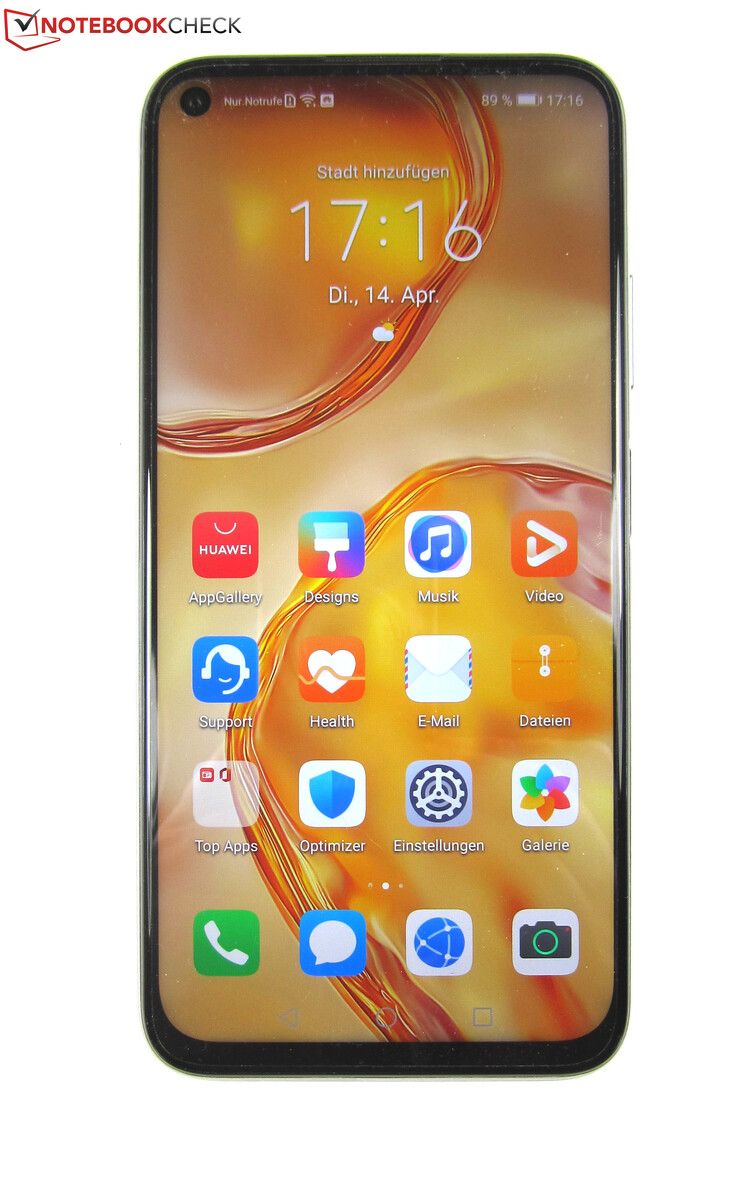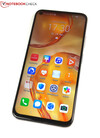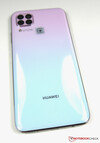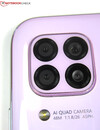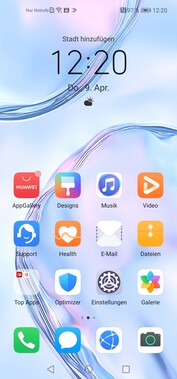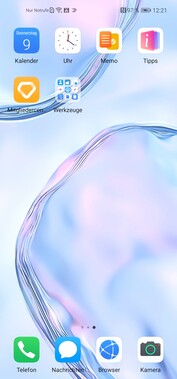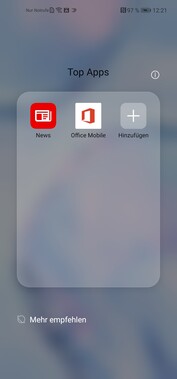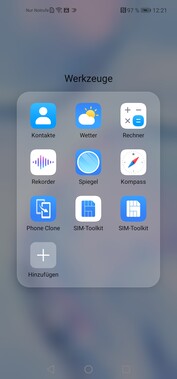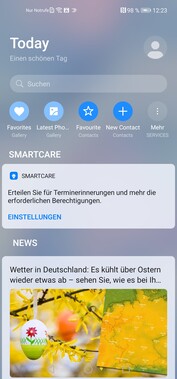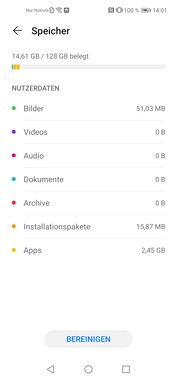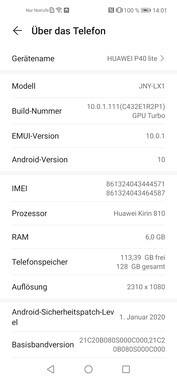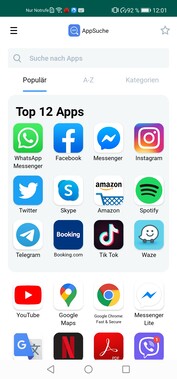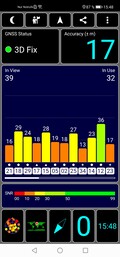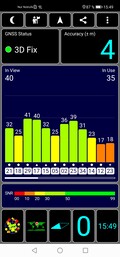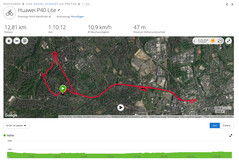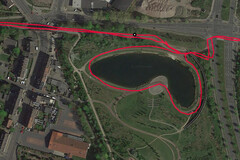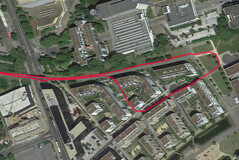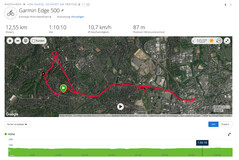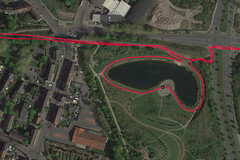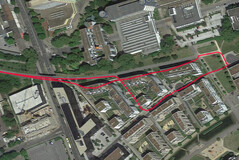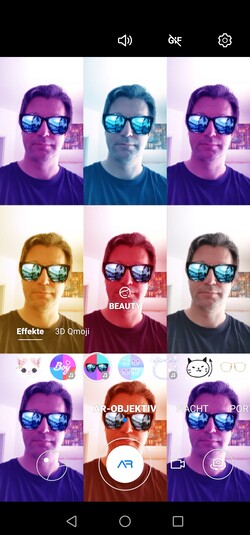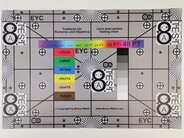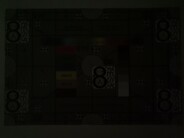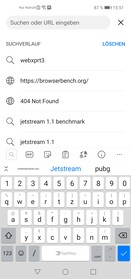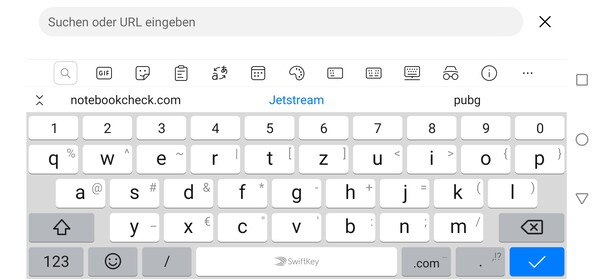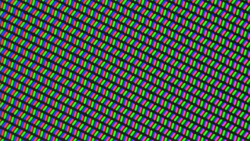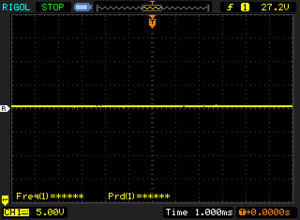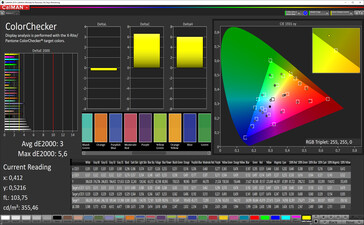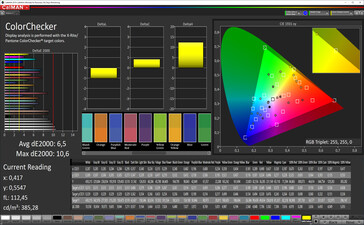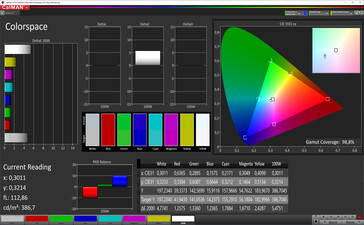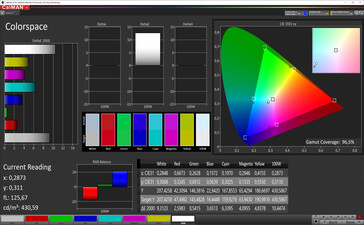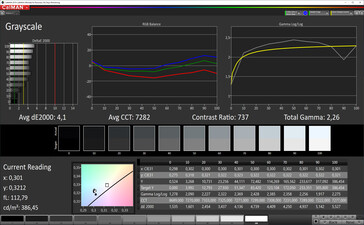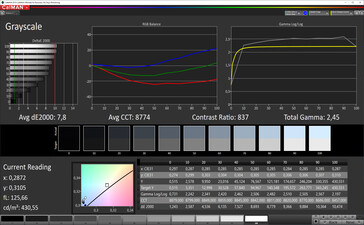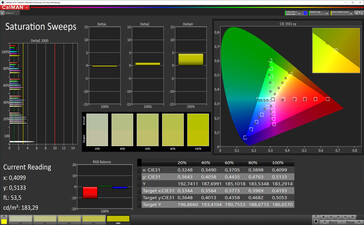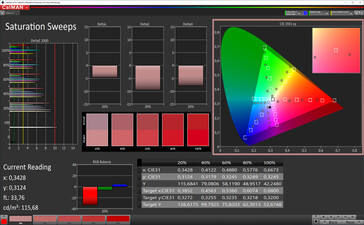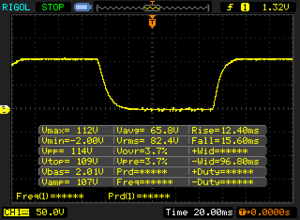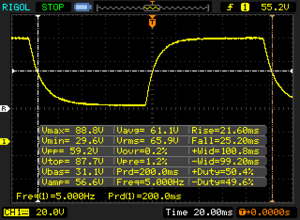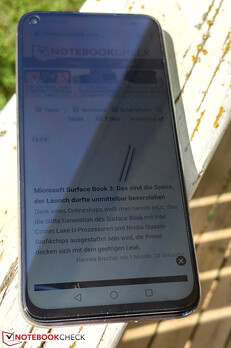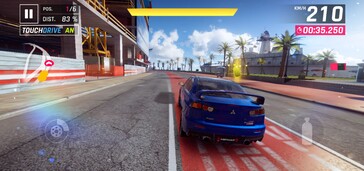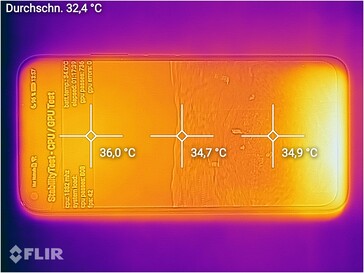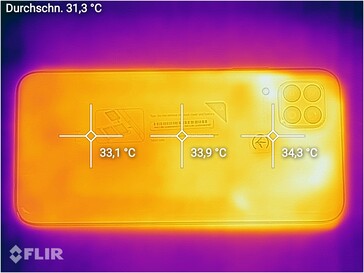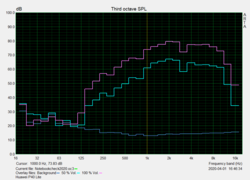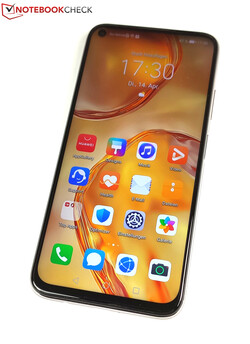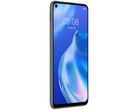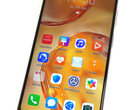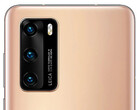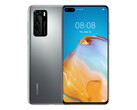Huawei P40 Lite Smartphone Review: Good even without Google Services
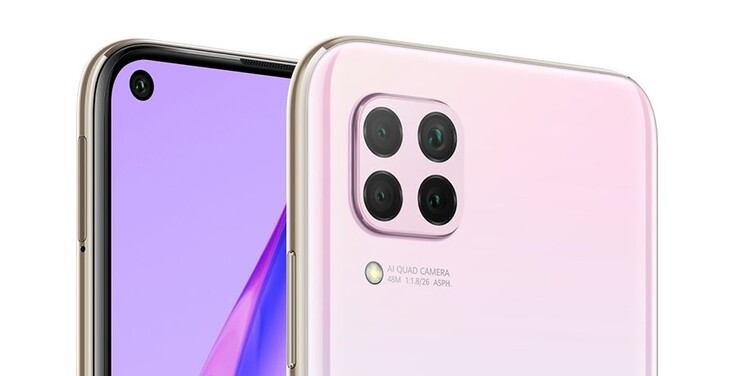
The thin air remains: While the trade war with the USA continues, Huawei has to make do without Google Services in its new smartphone models. So there is neither Gmail nor maps including updates, for example, and the Play Store is also missing. Huawei remedies this with its own App Store and some other tricks that we will take a look at in the Software segment. However, the P40 Lite still has Android 10 installed.
The Huawei P40 Lite is the successor of the Huawei P30 Lite New Edition and the entry-model of the P40 lineup. Its sibling models are the P40 and P40 Pro. Starting in summer of 2020, the P40 Pro Plus flagship will also join them.
At an official price of 299 Euros (~$325), the Huawei P40 Lite offers a 6.4-inch IPS display, 6 GB of RAM, and 128 GB of internal storage, and it uses the HiSilicon Kirin 810 mid-range SoC for computation. In contrast to its P40 siblings, the P40 Lite does not offer 5G but is limited to 4G/LTE.
Comparison Devices
Rating | Date | Model | Weight | Drive | Size | Resolution | Best Price |
|---|---|---|---|---|---|---|---|
| 81.3 % | 04/2020 | Huawei P40 Lite Kirin 810, Mali-G52 MP6 | 183 g | 128 GB UFS 2.1 Flash | 6.40" | 2310x1080 | |
| 87.4 % | 04/2020 | Huawei P40 Kirin 990 5G, Mali-G76 MP16 | 175 g | 128 GB UFS 3.0 Flash | 6.10" | 2340x1080 | |
| 79 % | 01/2020 | Huawei P30 Lite New Edition Kirin 710, Mali-G51 MP4 | 159 g | 256 GB UFS 2.1 Flash | 6.15" | 2312x1080 | |
| 80.3 % | 01/2020 | Motorola One Hyper SD 675, Adreno 612 | 210 g | 128 GB UFS 2.0 Flash | 6.50" | 2340x1080 | |
| 82.1 % | 02/2020 | Samsung Galaxy A71 SD 730, Adreno 618 | 179 g | 128 GB UFS 2.0 Flash | 6.70" | 2400x1080 | |
| 81.6 % | 07/2019 | Xiaomi Mi 9T SD 730, Adreno 618 | 191 g | 64 GB UFS 2.0 Flash | 6.39" | 2340x1080 |
Case – With a makeover, it is now even larger
At a weight of 183 grams, the P40 Lite feels neither too light nor too heavy in the hand. Due to its price level and choice of materials, it doesn't really feel exceptionally good in the hand either, and despit being rounded, the corners and edges feel slightly too sharp, as do the transitions between the display protector and frame or the nook of the fingerprint sensor. Nonetheless, the workmanship is good, and it resists even more forceful attempts to twist it during the test. However, the display and back can be pressed-in minimally.
Like the P30 Lite New Edition, the P40 Lite also uses a laminated LCD panel with attractive small bezels, which transition slightly rounded into the metal frame. The touchscreen takes up about 83% of the front. In the top left corner, the punch hole that houses the 16-MP selfie camera can be seen.
The back of the P40 Lite holds the four-camera system with 48 MP. Its lenses are arranged in a square that sticks out from the shiny plastic case, causing the smartphone become a bit wobbly when you set it down on a table. Huawei has moved the fingerprint sensor into the power button. The card tray can optionally hold either two nano SIM cards or a Nano Memory card instead of the second SIM. The smartphone does not have an IP certification.
Huawei offers the P40 Lite in three color variations. That of our test unit stands out most: In the "Sakura Pink" color model, the color of the back goes from a bright pink into a light blue/turquoise. The "Crush Green" model is just as bright but is kept in a more uniform color, and "Midnight Black" is the most subdued color option.
Equipment – Dual SIM and NM card in the P40 Lite
With the Nano Memory card (NM), Huawei uses its own storage card format which has the same size as a nano SIM card. It offers up to 256 GB of storage space and also supports the exFAT file format for files larger than 4 GB. So far so good, but the NM card is more expensive than a regular microSD card, which does not make it a very attractive option. In practice, there is still almost 113 GB of the internal storage available in the state of delivery, so that you initially might not necessarily need an NM card for additional storage space.
The USB-C port of the P40 Lite supports only USB-2.0 speeds. There are also some limitations in the Bluetooth 5. While it still supports BLE and the SBC and AAC audio codecs, it neither supports aptX nor aptX HD due to the trade war. DRM Widevine L1 for streaming in HD is therefore also missing. Also, there is no infrared sensor to control electronic devices either.
Software – A Huawei smartphone without Google Services
With Android 10 and the in-house EMUI 10 user interface, the Huawei P40 Lite uses the most current OS ingredients. There is only one problem: Unfortunately it lacks the Google Services and with that also the Play Store. As Google writes in a blog post, Google Services are only available for Play Protect certified devices – so this means, not for the P40 Lite. While various reports on some Internet forums show that at times it can work to install the Google Services later, there is some doubt whether they will then also continue to work over time.
To make the best of this situation, with AppGallery, Huawei has preinstalled its own app store on the P40 Lite. However, the range of apps shows some gaps compared to Google Play. AppSearch then promises a remedy. This app searches the Internet for apps that cannot be found in the AppGallery. Those can then be downloaded via third-party app stores such as APKPure or APKMonk.
Another possibility to get some apps would be to install the Amazon app store. Here, we were also successful in finding PUBG Mobile, which is necessary for our gaming benchmarks.
Communication and GPS – LTE Cat.9 and WiFi 5 in the P40 Lite
The Huawei P40 Lite can access the Internet via LTE Cat.9, supporting a fairly wide range of frequency bands. The smartphone can connect to WLAN via Wi-Fi 5, and in combination with our Netgear Nighthawk AX12 reference router, it can reach stable and decent data transfer rates of up to 338 Mb/s.
The P40 Lite can determine its location using the GPS, AGPS, GLONASS, QZSS, and Galileo satellite navigation systems. However, this will take fairly long indoors, and even after a whole minute it is unable to locate us with more accuracy than 17 meters. On the other hand, it is very fast outdoors, showing our position with an accuracy of four meters.
With a bike tour, we evaluate how well the smartphone GPS can do in everyday operation. In the comparison with the Garmin Edge 500 professional navigation device, it does well on the almost 13 km route (8 miles). Compared to the Garmin special device, the smartphone hardly does any worse and even shows us the more accurate route in some sections. So the P40 Lite is well-equipped for navigation tasks.
Telephone Functions and Voice Quality – Good and clearly understandable
The Huawei P40 Lite supports VoLTE and Wi-Fi calling. If you insert two SIM cards into the smartphone, both can be used for 4G connections. During phone calls to landlines or mobile phones, voices are transferred clearly, with the noise suppression reliably filtering out surrounding noises. Using the speaker, calling also works well, even if the voices tend to sound slightly tinny here.
Cameras – Four-camera system with 48 MP and autofocus
The heart of the four-camera system of the Huawei P40 Lite consists of a 48-MP lens with autofocus. In addition, there is an 8-MP camera with an ultra-wide-angle lens (120°, f/2.4), a 2-MP macro camera (f/2.4), and a 2-MP bokeh lens (also f/2.4) that collects depth information to generate attractive background blur effects. The selfie camera uses a 16-MP lens with an f/2.0 aperture.
The 48-MP lens has a ½-inch sensor, combining this with a light-sensitive f/1.8 aperture, so that you should get some good recordings even in bad light conditions. As scene 2 in the photo comparison shows, the Huawei smartphone succeeds fairly well in this but is still quite far from being able to clearly reproduce everything in the dark.
In daylight (scene 1), the quality of the photos is good, and they appear natural and show a lot of dynamic. The same goes for the ultra-wide-angle recordings (scene 3), but at times some blurriness can also sneak in, and the photos do not appear quite as rich in contrast anymore. In our test picture, this can be seen well in the transition from the lake to the shore with its vegetation – instead of some fine details, everything is only blurred into a pixel mush here.
With 5x optical zoom (scene 4), the recordings are still acceptable. However, the camera already shows some visible difficulties in reproducing the fine structures, using some aggressive sharpening instead. The maximum possible is a 6x zoom level.
The 16-MP selfie camera does fairly well at what it should do, and with features such as Portrait, Night, Slow Motion, and HDR, as well as AR stickers and Emojis, it brings everything you need for recording effects.
The P40 Lite can record videos with its selfie and main cameras at a maximum of 1080p and 30 frames per second, and the quality is also alright.
The performance is also decent under controlled light conditions. In daylight, it succeeds in producing a fairly natural color representation. However, we can already see some high deviations and DeltaE values in the first test chart that tests the color reproduction in the dark.
While the four-camera system is able to reproduce the test chart sharp in the center, it loses some focus towards the edges. On the other hand, it does not have any problems in accurately reproducing the color transitions and separate image structures.
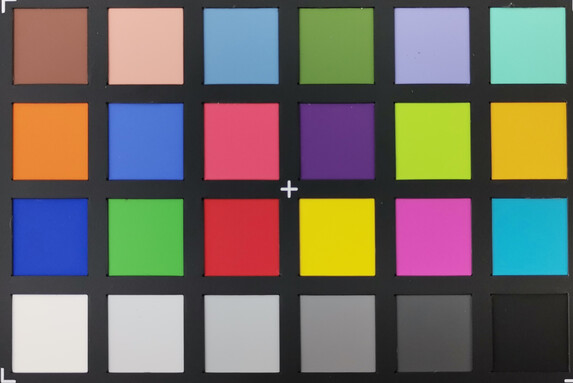
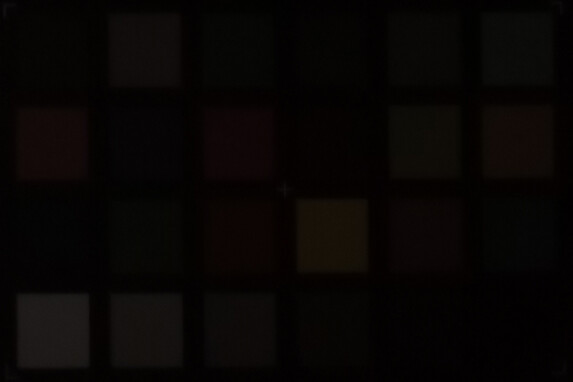
Accessories and Warranty – A 40-watt quick charger is included
Huawei includes a modular SuperCharge charger that can deliver up to 40 watts of power. There is also a USB cable (Type-A to Type-C), a headset, and a SIM tool, as well a quick-start manual and warranty instructions.
Input Devices and Operation – Fast and without any trouble
Fast and smooth – this can summarize the operation of the P40 Lite. The IPS display responds to input accurately, apps load quickly thanks to the UFS 2.1 storage, and the 6 GB of LPDDR4X RAM ensures that you can switch between simultaneously open apps without noticeable lag times. Any slight micro stutter that might rarely occur is not really annoying.
The fingerprint sensor does its job well, unlocking the smartphone just as reliably as the face recognition via the selfie camera.
Display – An accurate-color IPS panel in the Huawei P40 Lite
At 2310x1080 pixels, the resolution of the 6.4-inch IPS display of the Huawei P40 Lite has practically hardly changed compared to the P30 Lite New Edition (2312x1080 pixels). While the pixel density has dropped from 415 to 398 PPI due to the increased display diagonal, you won't notice this in practice. Subjectively, the screen of the P40 Lite displays the content just as sharp as its predecessor.
An average brightness of 448.4 cd/m² is not outstanding, but it should be sufficient for everyday operation, as long as you avoid too bright surroundings. Without the surrounding light sensor, you can get up to 431 cd/m². With an even distribution of light and dark areas (APL50), the brightness is not much higher at a maximum of 484 cd/m².
| |||||||||||||||||||||||||
Brightness Distribution: 87 %
Center on Battery: 478 cd/m²
Contrast: 976:1 (Black: 0.49 cd/m²)
ΔE Color 3 | 0.5-29.43 Ø5
ΔE Greyscale 4.1 | 0.57-98 Ø5.3
98.8% sRGB (Calman 2D)
Gamma: 2.26
| Huawei P40 Lite IPS, 2310x1080, 6.40 | Huawei P40 AMOLED, 2340x1080, 6.10 | Huawei P30 Lite New Edition IPS, 2312x1080, 6.15 | Motorola One Hyper IPS, 2340x1080, 6.50 | Samsung Galaxy A71 AMOLED, 2400x1080, 6.70 | Xiaomi Mi 9T AMOLED, 2340x1080, 6.39 | |
|---|---|---|---|---|---|---|
| Screen | 20% | -7% | -10% | 19% | 26% | |
| Brightness middle | 478 | 583 22% | 507 6% | 455 -5% | 629 32% | 589 23% |
| Brightness | 448 | 593 32% | 481 7% | 444 -1% | 646 44% | 589 31% |
| Brightness Distribution | 87 | 94 8% | 88 1% | 78 -10% | 95 9% | 96 10% |
| Black Level * | 0.49 | 0.38 22% | 0.53 -8% | |||
| Contrast | 976 | 1334 37% | 858 -12% | |||
| Colorchecker dE 2000 * | 3 | 3.03 -1% | 4.72 -57% | 3.86 -29% | 2.7 10% | 2.5 17% |
| Colorchecker dE 2000 max. * | 5.6 | 5.33 5% | 7.84 -40% | 6.59 -18% | 6 -7% | 4.9 12% |
| Greyscale dE 2000 * | 4.1 | 2 51% | 5.5 -34% | 4 2% | 3 27% | 1.6 61% |
| Gamma | 2.26 97% | 2.301 96% | 2.158 102% | 2.3 96% | 2.1 105% | 2.24 98% |
| CCT | 7282 89% | 6621 98% | 7596 86% | 7367 88% | 6340 103% | 6544 99% |
* ... smaller is better
Screen Flickering / PWM (Pulse-Width Modulation)
| Screen flickering / PWM not detected | |||
In comparison: 53 % of all tested devices do not use PWM to dim the display. If PWM was detected, an average of 17900 (minimum: 5 - maximum: 3846000) Hz was measured. | |||
When we examine the display with a spectral photometer and the CalMAN software, it does not show any weaknesses. Instead the opposite is the case, and for a smartphone of this price range, the P40 Lite impresses with a very balanced color reproduction, particularly when you choose the "Normal" color mode. Alternatively, there is a second color mode called "Vibrant," which creates a significantly more colorful reproduction but then also lacks some of the accuracy. Yet the color deviations also remain within limits here.
Display Response Times
| ↔ Response Time Black to White | ||
|---|---|---|
| 28 ms ... rise ↗ and fall ↘ combined | ↗ 12.4 ms rise | |
| ↘ 15.6 ms fall | ||
| The screen shows relatively slow response rates in our tests and may be too slow for gamers. In comparison, all tested devices range from 0.1 (minimum) to 240 (maximum) ms. » 67 % of all devices are better. This means that the measured response time is worse than the average of all tested devices (21.5 ms). | ||
| ↔ Response Time 50% Grey to 80% Grey | ||
| 46.8 ms ... rise ↗ and fall ↘ combined | ↗ 21.6 ms rise | |
| ↘ 25.2 ms fall | ||
| The screen shows slow response rates in our tests and will be unsatisfactory for gamers. In comparison, all tested devices range from 0.2 (minimum) to 636 (maximum) ms. » 78 % of all devices are better. This means that the measured response time is worse than the average of all tested devices (33.7 ms). | ||
Due to its display being not too bright, the Huawei P40 Lite leaves a mixed impression when using it outdoors. While the content remains easily readable in shady areas, you have to look twice to see things well in brighter surroundings, with the very reflective display of course not helping much here either.
In terms of the viewing-angle stability, the P40 Lite does very well because of its IPS panel. The content can always be read without any trouble, regardless of the angle from which you are looking at the display.
Performance – Faster than many other mid-range smartphones
The Huawei P40 Lite is run by the HiSilicon Kirin 810 octa-core SoC, which has a performance that places it in the mid-range. It uses two fast ARM Cortex A76 cores, which have a clock speed of up to 2.27 GHz, as well as six small and efficient Cortex A55 cores with a maximum clock speed of 1.88 GHz. The ARM Mali-G52 MP6 with six cores serves as the integrated graphics chip of the HiSilicon Kirin 810.
The Huawei P40 Lite turns out hard to beat for the other current mid-range smartphones such as the Motorola One Hyper, the Samsung Galaxy A71, and the Xiaomi Mi 9T. It is always a tad faster in every benchmark and is also able to leave the Huawei P30 Lite New Edition clearly behind in the dust. But of course it loses the duel with the Huawei P40 and its top-end HiSilicon Kirin 990 5G SoC as expected.
| GFXBench 3.1 | |
| on screen Manhattan ES 3.1 Onscreen (sort by value) | |
| Huawei P40 Lite | |
| Huawei P40 | |
| Huawei P30 Lite New Edition | |
| Samsung Galaxy A71 | |
| Xiaomi Mi 9T | |
| Average HiSilicon Kirin 810 (30 - 34, n=3) | |
| Average of class Smartphone (3.7 - 158, n=185, last 2 years) | |
| 1920x1080 Manhattan ES 3.1 Offscreen (sort by value) | |
| Huawei P40 Lite | |
| Huawei P40 | |
| Huawei P30 Lite New Edition | |
| Samsung Galaxy A71 | |
| Xiaomi Mi 9T | |
| Average HiSilicon Kirin 810 (33 - 35, n=3) | |
| Average of class Smartphone (6.2 - 279, n=185, last 2 years) | |
| AnTuTu v8 - Total Score (sort by value) | |
| Huawei P40 Lite | |
| Huawei P40 | |
| Huawei P30 Lite New Edition | |
| Samsung Galaxy A71 | |
| Average HiSilicon Kirin 810 (259370 - 319383, n=3) | |
The P40 Lite also makes life hard for the mid-range competitors in the browser performance, always being ahead again in each of the benchmarks. The most persistent pursuer turns out to be the Xiaomi Mi 9T here.
| Jetstream 2 - Total Score | |
| Average of class Smartphone (13.8 - 351, n=173, last 2 years) | |
| Huawei P40 (Huawei Browser 10.1) | |
| Huawei P40 Lite (Huawei Browser 10.1.0.300) | |
| Average HiSilicon Kirin 810 (43.2 - 55.4, n=3) | |
| Xiaomi Mi 9T (Chrome 75.0.3770.101) | |
| Samsung Galaxy A71 (Chrome 79.0.3945.136) | |
| Huawei P30 Lite New Edition (Chrome 79) | |
| JetStream 1.1 - Total Score | |
| Average of class Smartphone (last 2 years) | |
| Huawei P40 (Huawei Browser 10.1) | |
| Huawei P40 Lite (Huawei Browser 10.1.0.300) | |
| Xiaomi Mi 9T (Chrome 75.0.3770.101) | |
| Average HiSilicon Kirin 810 (77.4 - 91.2, n=3) | |
| Samsung Galaxy A71 (Chrome 79.0.3945.136) | |
| Huawei P30 Lite New Edition (Chrome 79) | |
| Speedometer 2.0 - Result | |
| Average of class Smartphone (14.9 - 445, n=157, last 2 years) | |
| Huawei P40 (Huawei Browser 10.1) | |
| Huawei P40 Lite (Huawei Browser 10.1.0.300) | |
| Average HiSilicon Kirin 810 (47.3 - 53.2, n=3) | |
| Xiaomi Mi 9T (Chrome 75.0.3770.101) | |
| Samsung Galaxy A71 (Chrome 79.0.3945.136) | |
| Huawei P30 Lite New Edition (Chrome 79) | |
| WebXPRT 3 - Overall | |
| Average of class Smartphone (39 - 304, n=122, last 2 years) | |
| Huawei P40 Lite (Huawei Browser 10.1.0.300) | |
| Huawei P40 (Huawei Browser 10.1) | |
| Xiaomi Mi 9T (Chrome 75.0.3770.101) | |
| Average HiSilicon Kirin 810 (71 - 97, n=3) | |
| Samsung Galaxy A71 (Chrome 79.0.3945.136) | |
| Huawei P30 Lite New Edition (Chrome 79) | |
| Octane V2 - Total Score | |
| Average of class Smartphone (2228 - 89112, n=214, last 2 years) | |
| Huawei P40 (Huawei Browser 10.1) | |
| Huawei P40 Lite (Huawei Browser 10.1.0.300) | |
| Xiaomi Mi 9T (Chrome 75.0.3770.101) | |
| Average HiSilicon Kirin 810 (15947 - 17925, n=3) | |
| Samsung Galaxy A71 (Chrome 79.0.3945.136) | |
| Huawei P30 Lite New Edition (Chrome 79) | |
| Mozilla Kraken 1.1 - Total | |
| Huawei P30 Lite New Edition (Chrome 79) | |
| Samsung Galaxy A71 (Chrome 79.0.3945.136) | |
| Average HiSilicon Kirin 810 (2472 - 3731, n=3) | |
| Xiaomi Mi 9T (Chrome 75.0.3770.101) | |
| Huawei P40 Lite (Huawei Browser 10.1.0.300) | |
| Huawei P40 (Huawei Browser 10.1) | |
| Average of class Smartphone (388 - 9999, n=173, last 2 years) | |
* ... smaller is better
In terms of the storage, the P40 Lite also shows its good side. Both in the test with an NM card, as well as in the test of the internal storage, the smartphone delivers a high data throughput. It particularly shines in the sequential read rate, which can be noticed in practice by short load times.
| Huawei P40 Lite | Huawei P40 | Huawei P30 Lite New Edition | Motorola One Hyper | Samsung Galaxy A71 | Xiaomi Mi 9T | Average 128 GB UFS 2.1 Flash | Average of class Smartphone | |
|---|---|---|---|---|---|---|---|---|
| AndroBench 3-5 | 19% | 19% | -22% | -23% | -26% | -1% | 173% | |
| Sequential Read 256KB | 913 | 1592 74% | 800 -12% | 492.2 -46% | 493 -46% | 492.7 -46% | 760 ? -17% | 1508 ? 65% |
| Sequential Write 256KB | 181.7 | 212.9 17% | 391.1 115% | 190.8 5% | 192.4 6% | 179.2 -1% | 297 ? 63% | 1118 ? 515% |
| Random Read 4KB | 157.3 | 189.4 20% | 198.7 26% | 129.4 -18% | 112.3 -29% | 128.6 -18% | 152.9 ? -3% | 247 ? 57% |
| Random Write 4KB | 175.4 | 197 12% | 171.6 -2% | 106.9 -39% | 109.6 -38% | 107.8 -39% | 131.6 ? -25% | 272 ? 55% |
| Sequential Read 256KB SDCard | 82.6 ? | 81.6 ? -1% | 76.6 ? -7% | 74.3 ? -10% | 73.4 ? -11% | 76 ? -8% | ||
| Sequential Write 256KB SDCard | 70.6 ? | 66.4 ? -6% | 66.8 ? -5% | 53.6 ? -24% | 57.2 ? -19% | 59.6 ? -16% |
Games – Current games run smoothly
The ARM Mali-G52 MP6 graphics chip ensures a good gaming performance. We were able to play our games selection consisting of Asphalt 9: Legends and PUBG Mobile in high detail settings smoothly at 30 fps. As usual, we determined the frame rates with the GameBench test tool.
Emissions – Cool operation and no throttling
Temperatures
The P40 Lite remains comfortably cool, and in the test it does not get warmer than 35.4 °C (96.7 °F) even under full load. The heat problems that had still been plaguing the P30 Lite New Edition predecessor are a thing of the past, even inside the case, as the GFXBench battery test shows. While the P30 Lite New Edition had shown some significant drops in the frame rates after 30 renders of the T-Rex and Manhattan sequences, the P40 Lite practically runs at the same speed from beginning to end. This also does not change if you activate the performance mode in the battery settings.
(+) The maximum temperature on the upper side is 35.4 °C / 96 F, compared to the average of 35 °C / 95 F, ranging from 21.9 to 56 °C for the class Smartphone.
(+) The bottom heats up to a maximum of 32.4 °C / 90 F, compared to the average of 33.8 °C / 93 F
(+) In idle usage, the average temperature for the upper side is 29.8 °C / 86 F, compared to the device average of 32.7 °C / 91 F.
Speaker
The speaker of the P40 Lite is positioned on the bottom and delivers a relatively balanced sound spectrum. While there is hardly any bass as expected, the mids and highs are very linear.
To get a better sound, you can connect speakers or headphones to the 3.5-mm audio port or connect a Bluetooth device to the smartphone. Unfortunately, the aptX and aptX HD audio codecs are not supported.
Huawei P40 Lite audio analysis
(+) | speakers can play relatively loud (88.2 dB)
Bass 100 - 315 Hz
(-) | nearly no bass - on average 28.6% lower than median
(±) | linearity of bass is average (10.7% delta to prev. frequency)
Mids 400 - 2000 Hz
(±) | reduced mids - on average 5.6% lower than median
(+) | mids are linear (5.4% delta to prev. frequency)
Highs 2 - 16 kHz
(+) | balanced highs - only 3.9% away from median
(+) | highs are linear (4.5% delta to prev. frequency)
Overall 100 - 16.000 Hz
(±) | linearity of overall sound is average (20.3% difference to median)
Compared to same class
» 27% of all tested devices in this class were better, 9% similar, 64% worse
» The best had a delta of 12%, average was 38%, worst was 134%
Compared to all devices tested
» 47% of all tested devices were better, 8% similar, 44% worse
» The best had a delta of 4%, average was 25%, worst was 134%
Huawei P30 Lite New Edition audio analysis
(±) | speaker loudness is average but good (80.8 dB)
Bass 100 - 315 Hz
(-) | nearly no bass - on average 63.4% lower than median
(+) | bass is linear (0% delta to prev. frequency)
Mids 400 - 2000 Hz
(-) | nearly no mids - on average 63.4% lower than median
(+) | mids are linear (0% delta to prev. frequency)
Highs 2 - 16 kHz
(-) | nearly no highs - on average 63.4% lower than median
(+) | highs are linear (0% delta to prev. frequency)
Overall 100 - 16.000 Hz
(-) | overall sound is not linear (120.2% difference to median)
Compared to same class
» 87% of all tested devices in this class were better, 10% similar, 3% worse
» The best had a delta of 12%, average was 38%, worst was 134%
Compared to all devices tested
» 96% of all tested devices were better, 3% similar, 1% worse
» The best had a delta of 4%, average was 25%, worst was 134%
Battery Life – It lasts for several days at a time
Power Consumption
The power consumption of the P40 Lite remains almost 20% below that of its predecessor and is also low compared to the rest of the test field. A long battery life should also be ensured because the battery capacity has been significantly increased – from 3340 mAh in the P30 Lite New Edition to 4200 mAh now.
| Off / Standby | |
| Idle | |
| Load |
|
| Huawei P40 Lite 4200 mAh | Huawei P40 3800 mAh | Huawei P30 Lite New Edition 3340 mAh | Motorola One Hyper 4000 mAh | Samsung Galaxy A71 4500 mAh | Xiaomi Mi 9T 4000 mAh | Average HiSilicon Kirin 810 | Average of class Smartphone | |
|---|---|---|---|---|---|---|---|---|
| Power Consumption | -11% | -18% | 3% | 32% | -28% | -14% | ||
| Idle Minimum * | 0.79 | 1 -27% | 0.95 -20% | 0.63 20% | 0.54 32% | 0.927 ? -17% | 0.897 ? -14% | |
| Idle Average * | 2.14 | 1.9 11% | 2.1 2% | 1.49 30% | 0.95 56% | 3 ? -40% | 1.452 ? 32% | |
| Idle Maximum * | 2.23 | 2.4 -8% | 2.4 -8% | 1.51 32% | 1.08 52% | 3.06 ? -37% | 1.629 ? 27% | |
| Load Average * | 3.6 | 3.5 3% | 4.2 -17% | 4.62 -28% | 2.7 25% | 4.39 ? -22% | 5.55 ? -54% | |
| Load Maximum * | 5.17 | 6.9 -33% | 7.7 -49% | 7.11 -38% | 5.4 -4% | 6.33 ? -22% | 8.31 ? -61% |
* ... smaller is better
Battery Life
The low power consumption and high battery capacity is reflected in a long battery life. With simulated web surfing at a controlled display brightness of 150 cd/m², the smartphone lasts for almost 17 hours, and playing a H.264 video, it even lasts for 19:36 hours. With these runtimes, the P40 Lite is about at the same level as the Huawei P40. Overall, the battery life of the P30 Lite New Edition is about 25% shorter.
| Huawei P40 Lite 4200 mAh | Huawei P40 3800 mAh | Huawei P30 Lite New Edition 3340 mAh | Motorola One Hyper 4000 mAh | Samsung Galaxy A71 4500 mAh | Xiaomi Mi 9T 4000 mAh | |
|---|---|---|---|---|---|---|
| Battery Runtime | -8% | -25% | -25% | -4% | 3% | |
| Reader / Idle | 2154 | 2063 -4% | 1359 -37% | 2164 0% | 2138 -1% | |
| H.264 | 1176 | 1052 -11% | 802 -32% | 1164 -1% | 1208 3% | |
| WiFi v1.3 | 1007 | 806 -20% | 719 -29% | 753 -25% | 815 -19% | 991 -2% |
| Load | 228 | 236 4% | 223 -2% | 242 6% | 258 13% |
Pros
Cons
Verdict – The Huawei P40 Lite is in a tough position
A good display, a lot of storage space, a long battery life, Android 10, and a surprising amount of performance – or in short, the Huawei P40 Lite is a good mid-range smartphone. The official offering price of 299 Euros (~$325) is also fair and has even already been underbid significantly by various online shops at the time of our test.
While the Huawei P40 Lite brings almost everything that makes a good mid-range smartphone, the lack of Google Services is a clear disadvantage.
It all could be really good, if it wasn't for the lack of Google Services and therefore the missing Google Play Store. Even though Huawei makes a visible effort to close this gap with its own AppGallery app store and the AppSearch, the offerings are currently unable to keep up with those of the Google Store. So all that remains is to hope that the offerings will keep increasing by a decent amount over time.
There is also another glimpse of hope: In the meantime Google has requested permission from the US government to be able to still provide Huawei with its services. So we are waiting for a decision.
Huawei P40 Lite
-
04/17/2020 v7
Manuel Masiero


 Deutsch
Deutsch English
English Español
Español Français
Français Italiano
Italiano Nederlands
Nederlands Polski
Polski Português
Português Русский
Русский Türkçe
Türkçe Svenska
Svenska Chinese
Chinese Magyar
Magyar